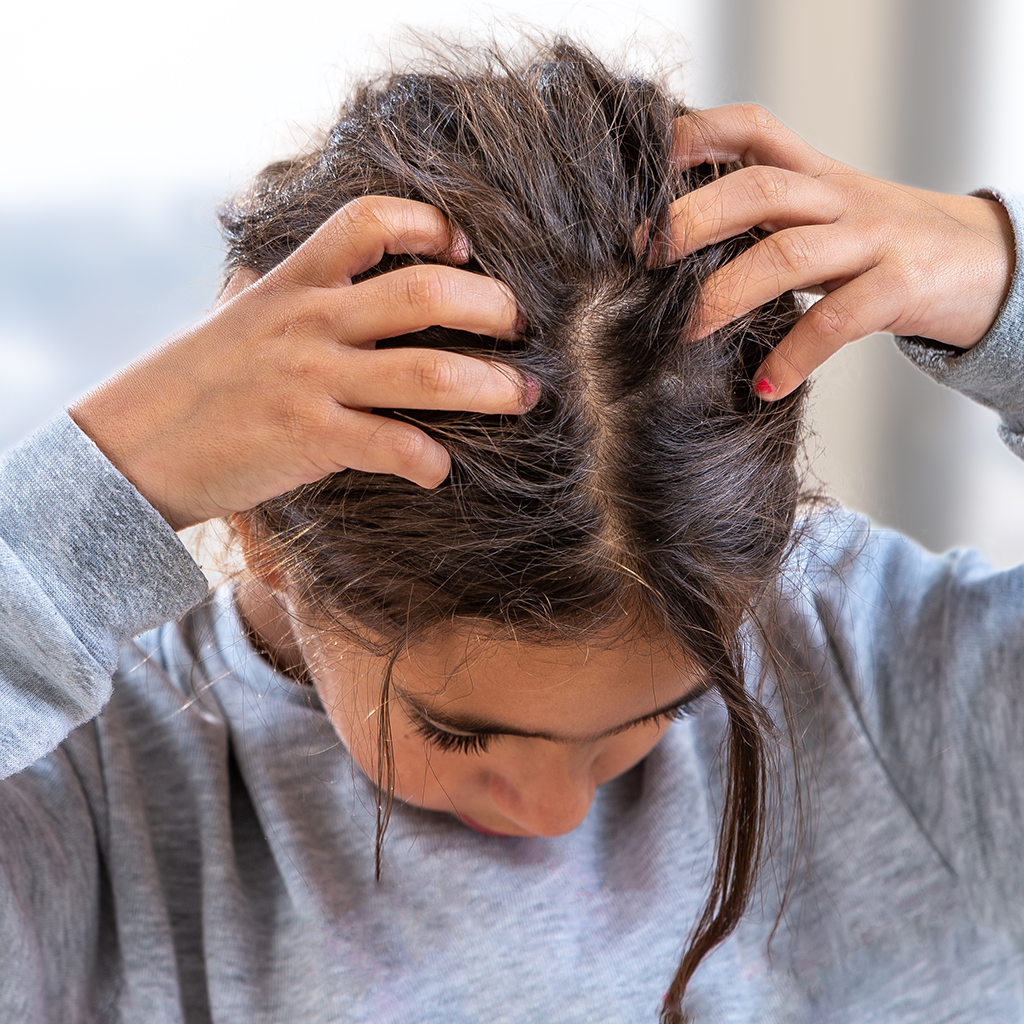Head lice and ticks: how to remove them?

Publication date: 06-10-2022
Updated on: 28-04-2023
Topic: Dermatology
Estimated reading time: 1 min
As small as they are insidious, they occur especially in hot weather: we are talking about lice and ticks, annoying and sometimes even dangerous parasites for humans. In particular, the tick bite should not be underestimated: despite being almost painless, it can lead to serious consequences for our health.
We discuss the topic with Dr. Chiara Lovati, a dermatology specialist at the Vein & Derma Clinic of the Istituto di Cura Città di Pavia.
What are lice and what do they cause?
Head lice are small parasites that feed on human blood and cause annoying itching. They occur mainly on the scalp, hiding in the hair. The length or cleanliness of the foliage does not matter: they simply find a hospitable environment and deposit their eggs there.
Head lice have as their only consequence for humans itching and social discomfort.
How do you get lice?
Head pediculosis is defined as an infestation of lice on the head or other areas of the body. It is not a disease, but precisely an infestation that manifests itself greatly in the summer months, as lice reproduce quickly and migrate from one human being to another with great ease. The great reservoir remains preschools and elementary schools because of the great propensity of children to physical contact.
How to remove lice from hair?
Head pediculosis is never of quick and rapid resolution because the big pitfall remains the eggs (nits). In cases of established lice infestation, the following can be used:
- products in the form of Malathion-based shampoos, mousses, gels and sprays that cause respiratory paralysis of the parasite and also have some pediculocidal activity on eggs;
- products extracted from pyrethrum, such as tetramethrin, permethrin and phenothrin, which are most active on lice but little on nits;
- non-chemical plant-based products, such as dimethicone, which kill the parasite by suffocation.
Essential is the combination of these local therapies with the careful, daily mechanical removal of nits with an appropriate comb that has very dense, nondeformable teeth. This remains the crucial part that is often overlooked and makes the whole pediculosis eradication procedure extremely time-consuming and annoying.
If the procedure is performed consistently, it takes an average of 10-15 days to eradicate lice and nits.
Ticks: how to recognize them and where do they attach?
The ticks are only a few millimeters in size, are oval in shape, and have 8 little legs. Males are dark, a shade tending toward brown, while females are more gray. They have a mouthparts that allow them to sting the host on which they rest and suck its blood.
They are especially deposited on animals such as birds, rodents, foxes, reptile badgers, but also on pets such as dogs and cats, so it is important to take care of your pets' hygiene.
Sometimes, however, they choose the man and attach to:
- head,
- legs,
- space between the toes.
If you walk through lawns with tall grass, it is good to always wear suitable shoes and long clothing, so as to lower the risk of coming into contact with ticks.
What diseases do ticks carry?
Ticks carry major diseases such as:
- Lyme disease, transmitted by the wood tick and found mostly in mountainous, forested areas,
- meningoencephalitis,
- infectious fevers.
Mediterranean button fever, on the other hand, is transmitted by the dog tick and is common in very hot and dry areas, particularly in the south of our country.
The real problem is that biting completely painless, the tick bite is often not recognized and the diagnosis is made late, bringing with it quite a few unpleasant consequences for our health. This is because when biting, the tick emits a slightly anesthetic substance that does not make the bite feel.
How to remove a tick?
In the case of a tick bite, it is a good idea to remove the parasite from your skin as soon as possible, without crushing it, but with the help of tweezers, grasping it gently to avoid breaking. Once grasped, it may be helpful to rotate the tick to pull it out of the skin so that no parts of the animal remain inside skin.
Never remove it by hand or with the help of disinfectants. Only after removing it, the skin should be disinfected with hydrogen peroxide and the doctor should be consulted. It may be helpful to store the removed parasite in a closed jar and bring it to the nearest laboratory.
It will be necessary to monitor bite area for a month or so and check for possible changes in the skin in the area manifested by swelling, irritation, or in major cases by what is known as 'centrifugal erythema' and the possible appearance of fever. In the latter case, systemic antibiotic therapy will have to be evaluated with one's own physician.
Usually, however, the bite is not felt, and after a few hours or days of the critter sucking blood, it will detach from the host without serious consequences.
